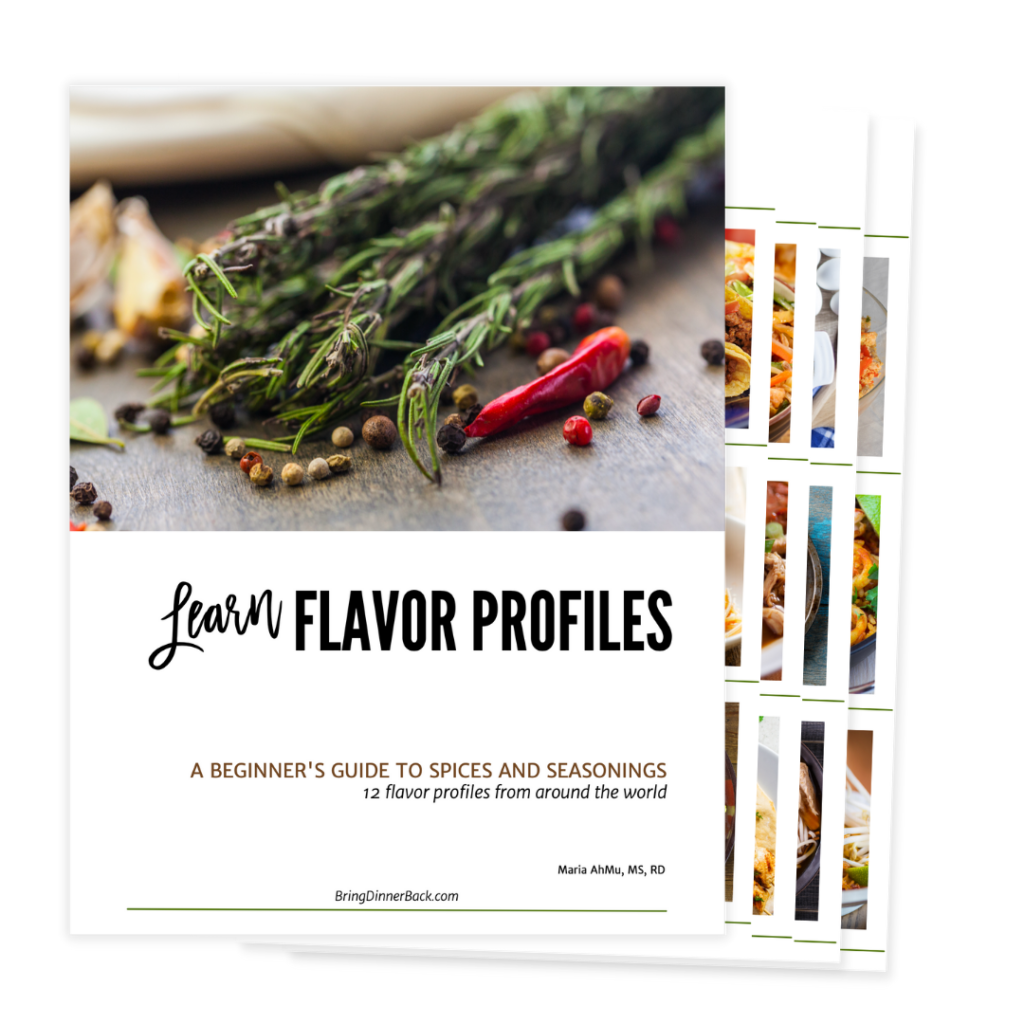Learning how to use spices and seasonings for more variety in cooking is one of the most fun aspects of experimenting in the kitchen.
Have you ever thought about how so many of the foods we eat cross cultural boundaries? Rice, eggs, cilantro, cheese, celery, just off the top of my head. I find it intriguing that a food can be so central to so many different cuisines.
What makes a dish Greek or Indian or Cajun? What makes a soup French?
For example, take chicken and rice. Both pretty universal foods, but you present them as distinctly ethnic dishes, depending on how you prepare them, what herbs, spices, and flavor profiles you use.
You could have Southern chicken and rice (or “chicken purlough”, as my Dad calls it) or fried rice or Pad Thai (with rice noodles) or paella.
Herb and spice taste test – a simple trick for trialing new herbs and spices
In one of my food science classes, Dr. Johnson taught us a trick for trialing new herbs and spices.
We worked in teams of 2 and each team had our own cooktop. We made scrambled eggs at the same time using the exact same process except for each team’s secret ingredient – a unique herb or spice.
Then we each grabbed a handful of forks and got to sample a single bite of each flavored batch of scrambled eggs. It was a fun and very educational exercise – my first venture into learning how to use spices and seasonings.
The neutral flavored eggs provided a perfect medium for getting familiar with new herbs and spices.
Herb, spice, or seasoning – what’s the difference?
I know you’ve heard the terms herbs and spices, but I want to clarify the difference in general terms.
An herb is fresh, probably still green in color.
A spice is dried. It might be the stalk (cinnamon from bark), the root (horseradish), or the seed (coriander and cardamom) or even the fruit (peppercorn). Spices tend to be stronger in flavor because they are dried, making the flavor compounds more concentrated. Spices may be ground or whole.
Seasoning is a more general term and refers to any salt, herb, or spice added to food to enhance the flavor.
Aromatics
Another important term – aromatics. Aromatics are flavor packed, cooked vegetables that add a distinct, signature dimension to a cooked food when they are heated or crushed.
For example celery, onions, carrots, garlic, ginger, peppers, dried chilies, fennel root.
Think about when you make soup.
The aromatics go into the pot first to cook in a small amount of oil and soften. These aromatics create the foundation of your soup broth.
Different types of cuisines use different aromatics.
French cooking calls for mirepoix, which is equal parts carrots, celery, and two parts of onion.
In the South, specifically in Cajun cooking, they use equal parts celery, bell pepper, and onion and call it the holy trinity.
So what flavors make a dish specifically Southern? Or Polynesian? Or North African?
The spices and seasonings that go into a dish to make it a specific type of cuisine are called flavor profiles.
I’ve prepared a print worthy beginner’s guide list of flavor profiles for you.
Try substituting a small handful of ingredients (no more than 4 at a time) to take your homemade soup or pizza or pasta a whole new direction. I think you’ll find that knowing how to use spices and seasonings will open new cooking horizons for you.
With a few tricks in your bag, you can use a few ingredients that are traditional to a specific type of cuisine and use them to transform your dish to something new and adventurous.
It works for pizza or pasta or rice or omelet or soup. A traditional Italian inspired pizza can become a Greek pizza by substituting Kalamata olives, adding feta cheese, and topping with sun dried tomatoes and artichoke hearts. An all American cheesy potato soup becomes a traditional French soup by substituting leeks for the onions, cream for the milk and cheese, and a yellow skinned potato for the russet. Add parsley and a bay leaf, and transform your dish!
Here is your beginner’s guide. Download it and let your kitchen creativity happen!
Download here.




